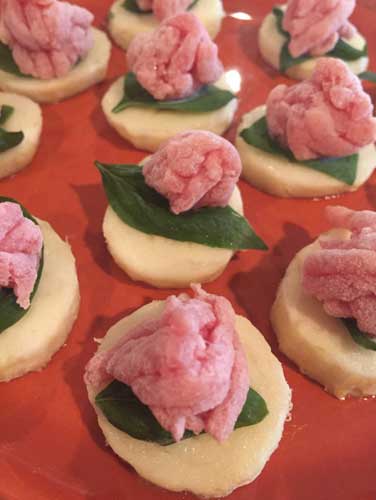This Popular Supplement Can Turn Your Pet's Gut Into a Yeasty Mess

4.26 BW Pet Nonlead
https://www.barkandwhiskers.com/2018-04-22-nl-prebiotics-whole-food-sources/
https://www.barkandwhiskers.com/p/95cb6f1d-9820-442a-b508-bf67116b27d0/
===
By Dr. Karen Shaw Becker
Lots of dog and cat parents who visit Mercola Healthy Pets are searching for information on prebiotics, which feed the growth of intestinal bacteria. Prebiotics are non-digestible food ingredients in the form of complex sugars and include:
- Fructooligosaccharides (FOS), which is produced from the natural fermentation of sugar cane
- Inulin, which is found naturally in chicory root, garlic and onions (note: never feed onions to pets)
- Oligofructose, a breakdown product of inulin
When bacteria ferment prebiotic fibers in the large intestine, short-chain fatty acids (SCFAs) are produced. SCFAs provide a number of benefits to your pet’s gastrointestinal (GI) tract. They provide cells with energy, keep things moving through the intestines, and reduce both inflammation and overgrowth of potentially pathogenic bacteria.
5 Whole Food Sources of Prebiotics
Many pets benefit from whole foods containing prebiotic fibers. The very best way for her to get all the dietary nutrients her body requires, including prebiotics, is in fresh whole food offered as a part of a nutritionally balanced, species-appropriate diet. It’s important to understand that while all prebiotics are fiber, not all fiber has a prebiotic effect on friendly bacteria.1 To be classified as a prebiotic the fiber must:
- Resist gastric acidity
- Resist absorption in the upper GI tract
- Be fermented by intestinal flora
- Stimulate the growth or activity of beneficial bacteria
Here are a few whole food sources of prebiotic fiber that can be fed to your pet in moderation:
1. Asparagus. Asparagus is also an excellent source of vitamin K, A, B1, B2, C and E, along with the folate, iron, copper, fiber, manganese and potassium.
2. Apples. Apples also contain powerful antioxidants and vitamin C. Serve apple slices to your pet, but never the core or seeds.
3. Cashews. Used as occasional treats, cashews make a very nutritious snack.
4. Raw garlic. Garlic must be fed with caution because it can cause changes in blood parameters when fed in very large quantities (much more than pets would naturally eat) or if it is given in a garlic supplement (which I never recommend).
One study demonstrated negative changes in blood parameters when dogs were given 5 grams of garlic per kg of body weight.2 This translates to eight cloves for a 12-pound dog! No dog I know would voluntarily consume this much and no owner I’ve ever met would voluntarily give this amount.
Dogs can healthfully consume 1/4 teaspoon of freshly chopped garlic per 15 pounds of body weight and reap substantial health benefits, just don’t go overboard.
5. Bananas. Here’s a nutrient-packed bite-sized snack you can prepare for your pets using bananas. I call it frozen basil banana towers.
Ingredients:
- Banana
- Fresh basil
- Ground free-range turkey or chicken, fresh
Directions:
- Slice the banana
- Place a fresh basil leaf on each slice
- Top with a small ground turkey or chicken meatball
- Freeze for three hours on a cookie sheet or freezer-safe pan

Since prebiotics feed your pet’s microflora, they should be offered in combination with probiotics and sporebiotics to promote the growth of good bacteria in the gut. You can offer a high-quality pet probiotic and/or fermented vegetables, which are an incredibly rich source of beneficial microbes.
Prebiotic Supplements Are a Bad Idea for Pets With GI Disorders
What many people don’t realize is that unlike probiotics, prebiotics aren’t right for every pet. Marketing claims often position prebiotic supplements as feeding only friendly bacteria in the digestive tract, but studies show this isn’t the case — prebiotics nourish unhealthy bacteria as well.
For a dog or cat with a very healthy digestive tract, prebiotics probably won’t do any harm. But many pets today have GI conditions like inflammatory bowel disease (IBD), leaky gut (dysbiosis), small intestinal bacterial overgrowth (SIBO) and other issues.
This means the good-to-bad bacteria ratio in the GI tract is out of balance, and we definitely don’t want to feed pathogenic bacteria with prebiotics. Pets with yeasty guts have a significant worsening of their condition when fed prebiotics, because sugar feeds yeast, and prebiotics are complex sugars.
The most common type of prebiotic added to inexpensive pet food formulas is beet pulp, a fibrous material found in sugar beets. Dried beet pulp is not an ideal source of prebiotics, just as the majority of affordable processed pet food is not an ideal source of nutrition for your dog or cat.
Higher-quality commercial pet foods containing prebiotics will typically list them as fructooligosaccharides, chicory root and/or garlic. Those are the ingredients to look for if your pet has a very healthy gut with none of the common GI conditions seen in so many dogs and kitties today.
In my opinion, however, if you feed a balanced, commercial raw diet or prepare balanced homemade meals for your otherwise healthy pet, you don’t need to add prebiotic supplements unless your integrative or holistic veterinarian specifically recommends them for some reason.



